New Discovery Enhances Recovery of Injured Muscle
 Researchers have developed a promising new approach to combat age related muscle atrophy that is associated with immobility following illness or injury. The technique which was shown in mice, arrests the processes through which muscle will begin to deteriorate at the start of exercise following a period of inactivity.
Researchers have developed a promising new approach to combat age related muscle atrophy that is associated with immobility following illness or injury. The technique which was shown in mice, arrests the processes through which muscle will begin to deteriorate at the start of exercise following a period of inactivity.
Exercise and activities that particularly are load bearing, help retain muscle mass which is especially important as we age. Illness and injury can lead to periods of decline in the quality of muscle mass and inactivity.
When we don’t have the ability to contract a muscle, it atrophies. If that immobility remains for very long, there is going to be a significant loss of strength and muscle mass.
Muscles of younger adults and children will tend to quickly recover resuming exercise. However, for older adults, they are deficient in the ability to recover muscles mass following a period of disuse.
The typical prescription is physical therapy to promote the healing process following immobility and injury. However, studies have shown that cellular dysfunction and inflammation in the muscles accumulate and hamper healing.
The team focused on the factors that degrade or enhance muscle mass in the aging process. In an earlier study, the team discovered that injecting pericytes, which are support cells, contributed to restoration of muscle in young mice following an episode of immobility. But the response was not as good in the older mice to these injections and the recovery was impeded.
In the current study the researchers obtained pericytes from the muscles of healthy, young mice and cultivated them in a cell culture. These cells were exposed to hydrogen peroxide. It is a strong oxidant that will promote the creation of extracellular vesicles (EVs) that contain factors that will battle stress and promote the healing process. They also collected EVs to use in therapy.
Extracellular vesicles are required to intercellular communication and can be utilized as biological markers of disease and health. Earlier studies have shown that in addition they are powerful biological mediators of healing and stress. As an example, blood can be taken from young mice, EVs from the blood collected and then injected into older mice and they would then have a younger collection of traits which are known as phenotypes. You can also take healthy EVs from the blood of mice, introduce them into a mouse with diabetes and it will reverse the diabetes.
However there hasn’t been any studies exploring the use of EVs in support of muscle recovery.
Pericyte-derived EVs were injected into the muscles of mice that were young and old that had gone through sustained immobility of muscle in one leg and were starting to reuse these muscles again.
They were successful. The mice that were treated with the stimulated EVs were able to recover skeletal muscle fiber size in both the young and older mice. The research also showed for the fist time EVs that had been derived from muscle pericytes produced a diversity of factors that could combat oxidative stress and inflammation.
To view the original scientific study click below:
Development of a cell-free strategy to recover aged skeletal muscle after disuse



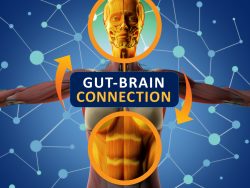 Gut microbiota produce by-products which move throughout the bloodstream and regulate a host of physiological processes that include appetite, body temperature, metabolism, immunity and functions of the brain. Research has discovered in an animal model that hypothalamic neurons will detect differences of activity in the bacteria and change body temperature and appetite accordingly. The findings show that a direct dialog will occur between the brain and the gut microbiota. This is a finding that might point to advanced therapeutic ways to address metabolic disorders such as obesity and diabetes.
Gut microbiota produce by-products which move throughout the bloodstream and regulate a host of physiological processes that include appetite, body temperature, metabolism, immunity and functions of the brain. Research has discovered in an animal model that hypothalamic neurons will detect differences of activity in the bacteria and change body temperature and appetite accordingly. The findings show that a direct dialog will occur between the brain and the gut microbiota. This is a finding that might point to advanced therapeutic ways to address metabolic disorders such as obesity and diabetes. It was found from healthy young people who participated in a sleeping lab study that sleeping for just one night with low light (such as a TV with the sound off) raised their heart rate and blood sugar levels. The low light enters the eyes and will disrupt sleep even though the participants slept with their eyes closed.
It was found from healthy young people who participated in a sleeping lab study that sleeping for just one night with low light (such as a TV with the sound off) raised their heart rate and blood sugar levels. The low light enters the eyes and will disrupt sleep even though the participants slept with their eyes closed. The University of Michigan has discovered that noninvasive technology of sound can break down tumors in the liver of rats. It can also kill cancer cells and stimulate the immune system to prevent any continued spread. This potentially could lead to advances in improved outcomes of cancer in humans.
The University of Michigan has discovered that noninvasive technology of sound can break down tumors in the liver of rats. It can also kill cancer cells and stimulate the immune system to prevent any continued spread. This potentially could lead to advances in improved outcomes of cancer in humans.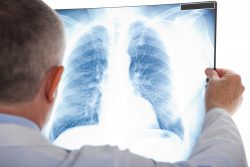 Research highlighting a new type of cell discovered in the human lung could play an important role in treating diseases of the lungs. The study from the Perelman School of Medicine at the Univ. of Pennsylvania have reported their discovery of finding and identifying the new cells.
Research highlighting a new type of cell discovered in the human lung could play an important role in treating diseases of the lungs. The study from the Perelman School of Medicine at the Univ. of Pennsylvania have reported their discovery of finding and identifying the new cells.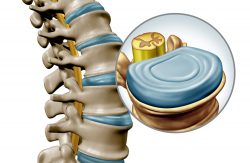 In the world of aging research, using the Yamanaka stem cell factors for cellular reprogramming has become very important. Yamanaka factors are four master genes that were discovered by Drs. Kazutoshi and Shinya Yamanaka and are used to reprogram cells back to an embryonic state. It has now been suggested that transient exposure to them may be the key to treating many health problems such as vertebral disc degeneration.
In the world of aging research, using the Yamanaka stem cell factors for cellular reprogramming has become very important. Yamanaka factors are four master genes that were discovered by Drs. Kazutoshi and Shinya Yamanaka and are used to reprogram cells back to an embryonic state. It has now been suggested that transient exposure to them may be the key to treating many health problems such as vertebral disc degeneration.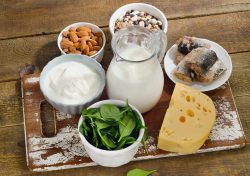 A discovery of an essential nutrient has been found that the body needs to maintain health. The research from Seraphina Therapeutics in San Diego discovered the first essential fatty acid. It is known as pentadecanoic acid, also called C15:0. It has been shown to have broad health benefits and can be found in saturated fat from butter, milk, plants and fish. Currently there is omega-3 and omega-6 fatty acids that are considered essential by nutrition scientists. C15:0 would join these fatty acids and could be the first of other essential nutrients that could now be found.
A discovery of an essential nutrient has been found that the body needs to maintain health. The research from Seraphina Therapeutics in San Diego discovered the first essential fatty acid. It is known as pentadecanoic acid, also called C15:0. It has been shown to have broad health benefits and can be found in saturated fat from butter, milk, plants and fish. Currently there is omega-3 and omega-6 fatty acids that are considered essential by nutrition scientists. C15:0 would join these fatty acids and could be the first of other essential nutrients that could now be found. New research has introduced a new approach to reverse aspects of age related cognitive function and deterioration in the brain through the microbes in the gut.
New research has introduced a new approach to reverse aspects of age related cognitive function and deterioration in the brain through the microbes in the gut.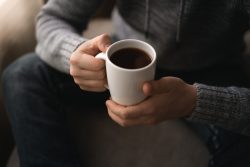 Do you drink coffee daily? New research shows that there are benefits from caffeine on your cardiovascular and digestive systems.
Do you drink coffee daily? New research shows that there are benefits from caffeine on your cardiovascular and digestive systems.  An engineer has discovered a way to filter unwanted blood cells using magnets. His tool might be able to be used in clinical trials within the next year.
An engineer has discovered a way to filter unwanted blood cells using magnets. His tool might be able to be used in clinical trials within the next year.